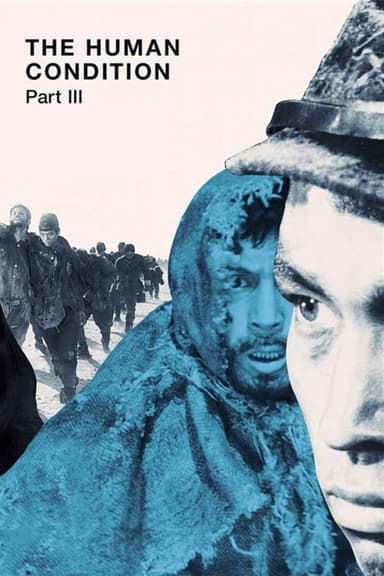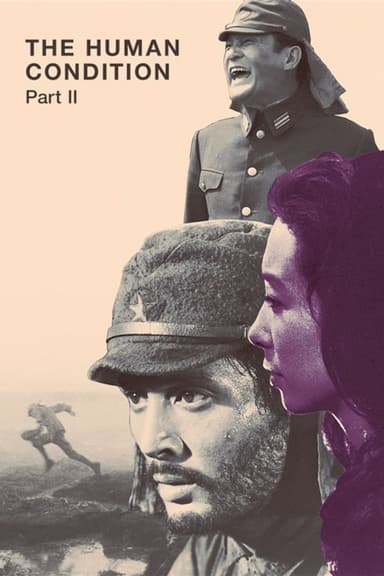
The Human Condition I: No Greater Love
1959 • Drama, History, War
After handing in a report on the treatment of Chinese colonial labor, Kaji is offered the post of labor chief at a large mining operation in Manchuria, which also grants him exemption from military service. He accepts, and moves to Manchuria with his newly-wed wife Michiko, but when he tries to put his ideas of more humane treatment into practice, he finds himself at odds with scheming officials, cruel foremen, and the military police.
Runtime: 3h 26m
Why you should read the novel
For those captivated by powerful World War II dramas, Junpei Gomikawa's novel The Human Condition offers a harrowing and deeply nuanced exploration of humanity and morality in times of conflict. The book delves into the internal struggles of Kaji, providing greater psychological depth and context than the cinematic adaptation. Reading the novel allows you to fully appreciate the philosophical and historical background that inspired both the film trilogy and profound post-war Japanese literature.
Adaptation differences
One of the main differences between The Human Condition I: No Greater Love and Junpei Gomikawa's original novel is the scope of characterization. The novel provides deeper insight into Kaji's inner turmoil and elaborate backstories for side characters, which are only briefly touched upon in the film. Read the book to discover the full complexity of each character's motivations and personal journeys.
Another notable distinction is the narrative pacing. The film, due to runtime constraints, condenses and omits certain subplots and events present in the book. The novel takes its time to intricately build the setting and moral dilemmas, offering a richer, more immersive reading experience. Literature enthusiasts will find the book’s pacing gives them room to contemplate the protagonist’s ethical challenges in greater detail.
The emotional and philosophical depth present in Gomikawa’s writing is difficult to capture on screen. While the film uses visual storytelling and performances to convey emotion, the novel immerses readers in Kaji’s thoughts and feelings through internal monologues and detailed prose. Fans of profound literary works will appreciate how the book unpacks the theme of human conscience during wartime.
Lastly, reading The Human Condition novel provides access to cultural and historical nuances that may be overlooked or simplified in the film adaptation. Junpei Gomikawa’s storytelling is rooted in postwar Japanese sensibilities and ideologies, offering educational value as well as narrative depth. For a complete picture, experiencing the source novel is essential for anyone interested in Japanese history and literature.
The Human Condition I: No Greater Love inspired from
The Human Condition
by Junpei Gomikawa







